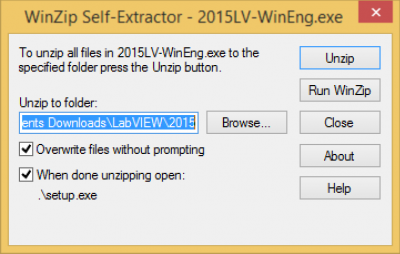

Note: The User Components directory is a read-only directory, and some versions of the Windows OS will prevent VI Package Manager from copying files to this location during installation.
LABVIEW 2013 LICENSE FOLDER SOFTWARE
In order for the C Series Module Detection component to appear in the LabVIEW Real-Time Software Wizard (NI MAX > Target > Software > Add/Remove Software) "Custom software installation" features list, the SMI installation will copy a folder containing the component to the User Components directory: C:\Program Files (x86)\National Instruments\RT Images\User Components
LABVIEW 2013 LICENSE FOLDER INSTALL
Installing the C Series Module Detection component will install missing SMI component dependencies (NI-RIO, System Configuration, etc.), as well as target specific FPGA bitfiles on the RIO target. This component may be installed through custom software installation in NI MAX, or through programmatic use of SysConfig (Functions>Measurement>System Configuration>Software Management>Install.vi). In order to detect C Series modules in a RIO target, such as CompactRIO, the SMI library requires that the C Series Module Detection component is installed on the RIO real-time target. C series modules in RIO chassis are detected by deploying a target specific FPGA bitfile to query module EEPROM memory for identification information. For example, SMI network detection encapsulates the SysConfig Find Hardware.vi to retrieve information about detected devices. Device detection and system configuration management is implemented by encapsulating the System Configuration (SysConfig) API, and supplemented with RIO target-specific module detection code.


The System Management and Information (SMI) library provides functions for the detection of network devices and the management of NI RIO hardware.


 0 kommentar(er)
0 kommentar(er)
